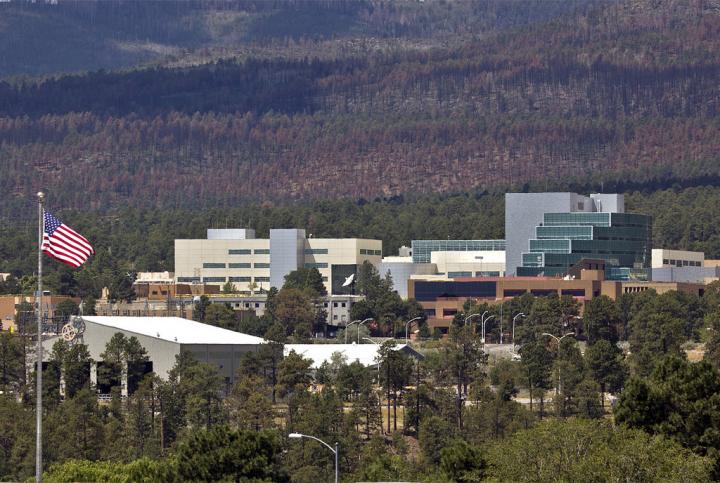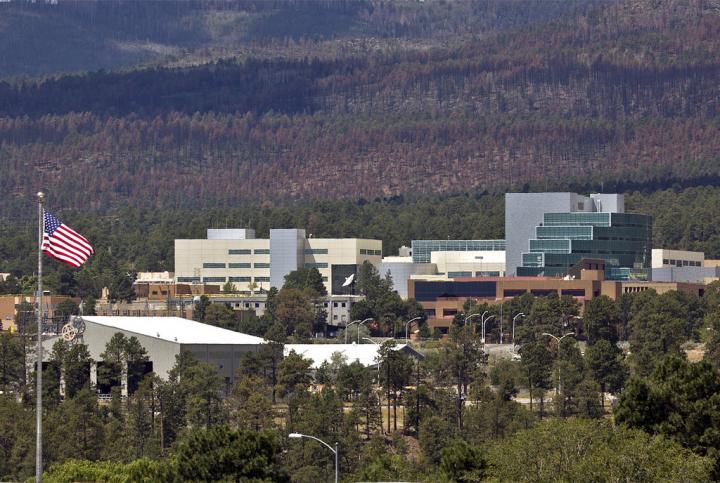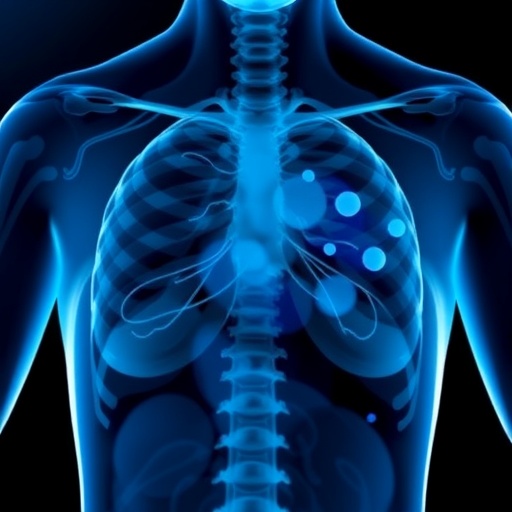
Credit: LANL
LOS ALAMOS, N.M., April 24, 2017– A new computer modeling study from Los Alamos National Laboratory is aimed at making epidemiological models more accessible and useful for public-health collaborators and improving disease-related decision making.
"In a real-world outbreak, the time is often too short and the data too limited to build a really accurate model to map disease progression or guide public-health decisions," said Ashlynn R. Daughton, a graduate research assistant at Los Alamos and doctoral student at University of Colorado, Boulder. She is lead author on a paper out last week in Scientific Reports, a Nature journal. "Our aim is to use existing models with low computational requirements first to explore disease-control measures and second to develop a platform for public-health collaborators to use and provide feedback on models," she said.
The research draws on Los Alamos' expertise in computational modeling and health sciences and contributes to the Laboratory's national security mission by protecting against biological threats. Infectious diseases are a leading cause of death globally. Decisions surrounding how to control an infectious disease outbreak currently rely on a highly subjective process that involves both surveillance and expert opinion. Epidemiological modeling can fill gaps in the decision-making process, she says, by using available data to provide quantitative estimates of outbreak trajectories–determining where the infection is going, and how fast, so medical supplies and staff can be deployed for maximum effect. But if the tool requires unavailable data or overwhelms the capabilities of the health system, it won't be operationally useful.
Collaboration between the modeling community and public-health policy community enables effective deployment, but the modeling resources need to be connected more strongly with the health community. Such collaboration is rare, as Daughton describes it, resulting in a scarcity of models that truly meet the needs of the public-health community.
Simple, traditional models group people into categories based on their disease status (for example, SIR for Susceptible, Infected or Recovered). "For this initial work, we use a SIR model, modified to include a control measure, to explore many possible disease progression paths. The SIR model was chosen because it is the simplest and requires minimal computational resources," the paper notes.
Other models are called agent-based, meaning they identify agents, often akin to an "individual," and map each agent's potential interactions during a day (for example, an individual might go to school, go to work, and interact with other members of the household). The model then extrapolates how each interaction could spread the disease. Because these are high-resolution models requiring significant expertise and computing power, as well as large quantities of data, they require resources beyond the reach of an average health department.
For this study, using the simpler SIR model, the team explored outbreaks of measles, norovirus and influenza to show the feasibility of its use and describe a research agenda to further promote interactions between decision makers and the modeling community.
"Unlike standard epidemiological models that are disease and location specific and not transferrable or generalizable, this model is disease and location agnostic and can be used at a much higher level for planning purposes regardless of the specific control measure," said Alina Deshpande, group leader of the Biosecurity and Public Health group at Los Alamos and principal investigator on the project.
Overall, the team determined, there is a clear need in the field to better understand outbreak parameters, underlying model assumptions, and the ways that these apply to real-world scenarios.
The authors conclude, "We thus propose thoughtful validation of SIR models as an important next step. Such a validation would accomplish several things. It would (1) validate the counterfactual approach, (2) provide additional data to describe when compartmental models are appropriate approximations of real world outbreaks and (3) provide data to describe situations where the compartmental models do not match real world outbreaks and should not be used for decision support."
###
The paper: "An approach to and web-based tool for infectious disease outbreak intervention analysis," authors Ashlynn R. Daughton, Nicholas Generous, Reid Priedhorsky and Alina Deshpande, in Scientific Reports.
Funding: This project was funded by the Defense Threat Reduction Agency.
About Los Alamos National Laboratory
Los Alamos National Laboratory, a multidisciplinary research institution engaged in strategic science on behalf of national security, is operated by Los Alamos National Security, LLC, a team composed of Bechtel National, the University of California, BWX Technologies, Inc. and URS Corporation for the Department of Energy's National Nuclear Security Administration.
Los Alamos enhances national security by ensuring the safety and reliability of the U.S. nuclear stockpile, developing technologies to reduce threats from weapons of mass destruction, and solving problems related to energy, environment, infrastructure, health and global security concerns.
Media Contact
Nancy Ambrosiano
[email protected]
505-667-0471
@LosAlamosNatLab
http://www.lanl.gov
############
Story Source: Materials provided by Scienmag





